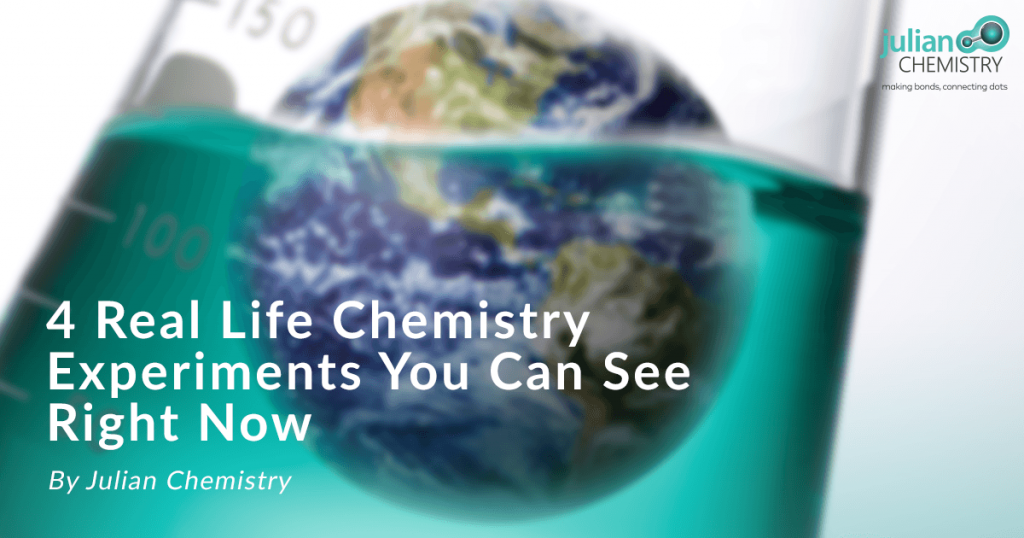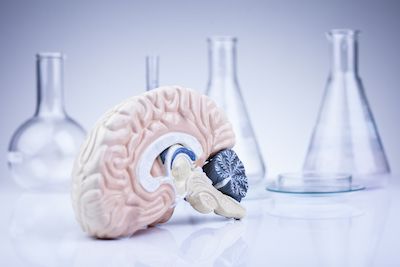Four Real Life Chemistry Experiments You Can See Right Now
Survival Guide: A Level Chemistry
August 23, 2017The Chemistry Behind the Tasty Flavours of Sushi
October 4, 2017
As students, we often times get so distracted with studying and learning as much as we can that we don’t take the time to actually enjoy the subject. A and O level Chemistry is a prime example. Here at Julian Chemistry, we not only strive to help students succeed in Chemistry learning, but also develop an enjoyment for the subject while attending our Chemistry tuition classes. We know it can be easy to get overwhelmed in memorizing chemical equations or acids and bases, that we don’t notice these reactions and key examples right in front of us. It’s the real life examples of chemistry that make it so cool! In this article, we’d like to show you just a few examples of chemistry in our everyday lives that will make you excited to learn more.
Whether they are large philosophical questions like “Why is the sky blue?” or something as simple as “Why do onions make me cry?” – these questions can be answered with chemistry. Keep reading to find out how!
1. Why Is the Sky Blue?

You may be aware that the light that comes from the sun is termed “white light”. This kind of light actually contains all the colours of the spectrum, all of which can be seen after a rainstorm in the form of a rainbow. Cool right?
On a nice day when the sun is high in the sky, the gas particles in the air absorb only the short wavelengths of light and results in the reflection of blue light in all directions. If you look closely you may notice that the blue colour of the sky seems to fade as it reaches the horizon.
This is because the light has to travel a much longer distance to reach our eyes and some of the blue light waves are scattered away. This also explains the phenomenon we sometimes see at sunset with a plethora of colours in the sky. Dust and particles in the atmosphere absorb different wavelengths of light, sending colours of pink, purple, and orange to our eyes.
2. Crying While Cutting Onions? It’s Actually Sulphuric Acid!

Now, let’s address the irritating question. Why do we cry when cutting onions? Many of us have experienced the irritating – and sometimes painful – phenomenon associate with cutting onions. But how can chemistry explain this?
The act of cutting or damaging the onion produces a chemical known as thiopropanol S-oxide. This chemical wafts upwards towards the eyes and upon landing on the cornea, stimulates a nervous response from the tear glands. The water that rushes towards the irritant, or the “tears”, is an effort to dilute and neutralize the thiopropanol S-oxide. However, the water actually reacts with thiopropanol S-oxide and creates sulphuric acid, which explains the burning sensation we get along with the tears and the need to create more tears to continue to attempt to flush it away.
Chemistry also explains why we stop crying once we put the onions in the pan and cook them. This heat inactivates the enzymes so they no longer create the toxic reaction on the surface of our eyes. The kitchen has a lot of examples of chemistry, what else can you think of?
3. Brain Chemistry

Those are just two of an endless number of cool science experiments going on all around us. Speaking of crying, what about our real emotions? Did you know that feelings of sadness and happiness (and all the other emotions!) can be explained by chemistry?
Our brains contain many chemicals that can dictate our emotions like dopamine, norepinephrine, and serotonin. Dopamine, also known as the “pleasure chemical”, hangs out in the neurons of our brain. When something good happens to us, dopamine travels through the synapse between two neurons and attaches to receptors on the neighbouring neuron.
This interaction occurs thousands of times, sending dopamine through a network of neurons in the brain and giving us the feeling of pleasure. It’s the result of imbalances in chemicals like dopamine or even faulty synapse interactions that result in depression and other mental or emotional disorders. Interesting, right?
4. How Does Soap Work?

Now, back to the kitchen. Soap? The molecules in soap are polar, one end is hydrophobic and the other extremely hydrophilic. In dirty dishes, multiple soap molecules surround oil or grease molecules in order to wash them away. The hydrophobic end is bonded to the oil while the hydrophilic end bonds easily with water. This allows the oil or grease on your dishes to be surrounded by the soap molecules and washed away easily down the drain. Think about it next time you wash dishes, it might make the task a little more interesting!
Chemistry Is Everywhere!
These are just a few ways that chemistry is found throughout our lives. So next time you’re listening to an A Level Chemistry tutor or lecturer consider how the topic might affect your life. It’s easy to focus solely on memorizing or learning as much as possible but if you’re interested and invested in the topic, it makes it that much easier to learn.
We hope that this article has ignited excitement for all things chemistry, and we hope that these examples stick with you through your studies. We also hope it inspires you to seek out more examples and look closer at the products around you and how chemistry affects all our lives.



